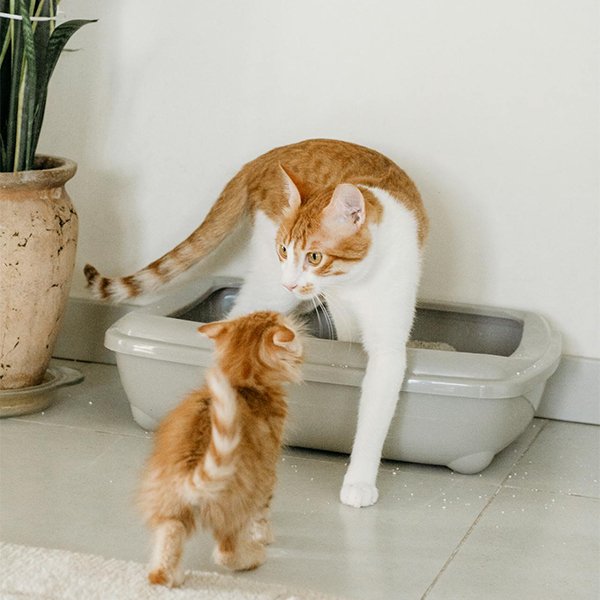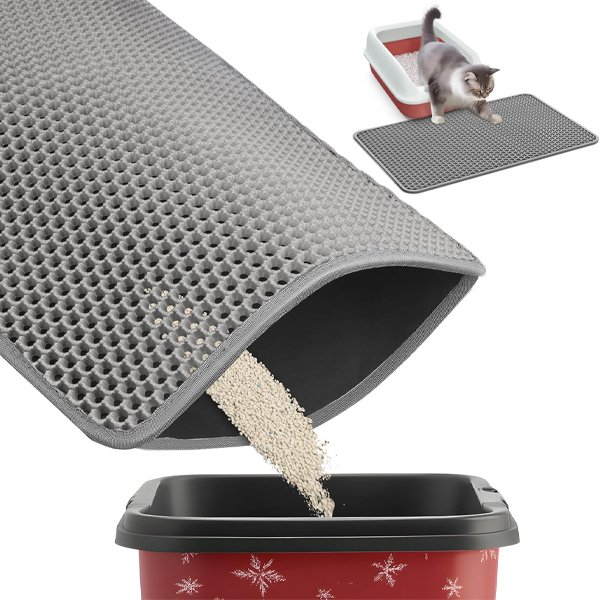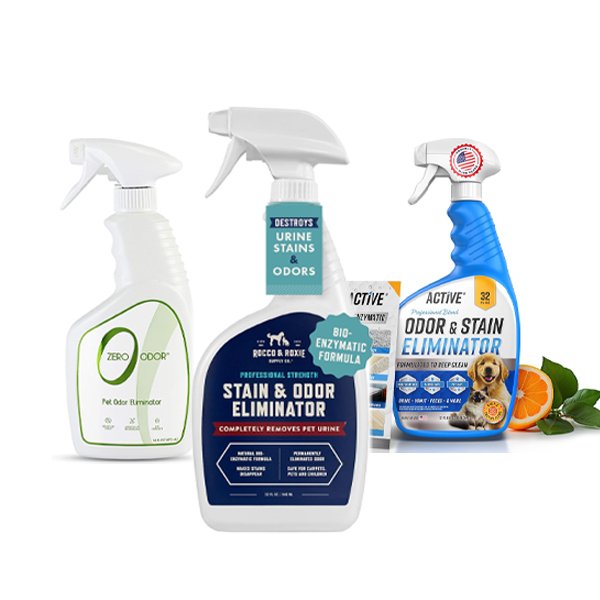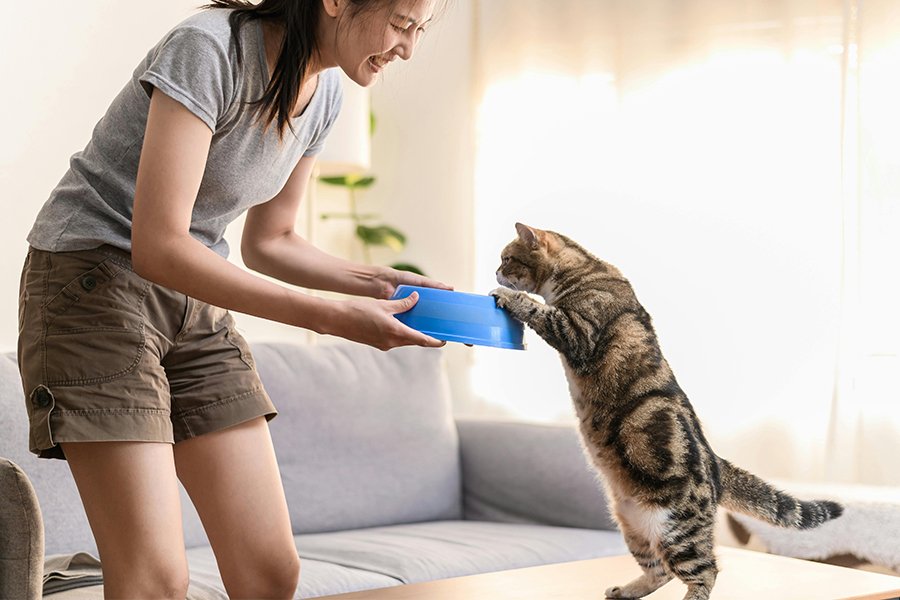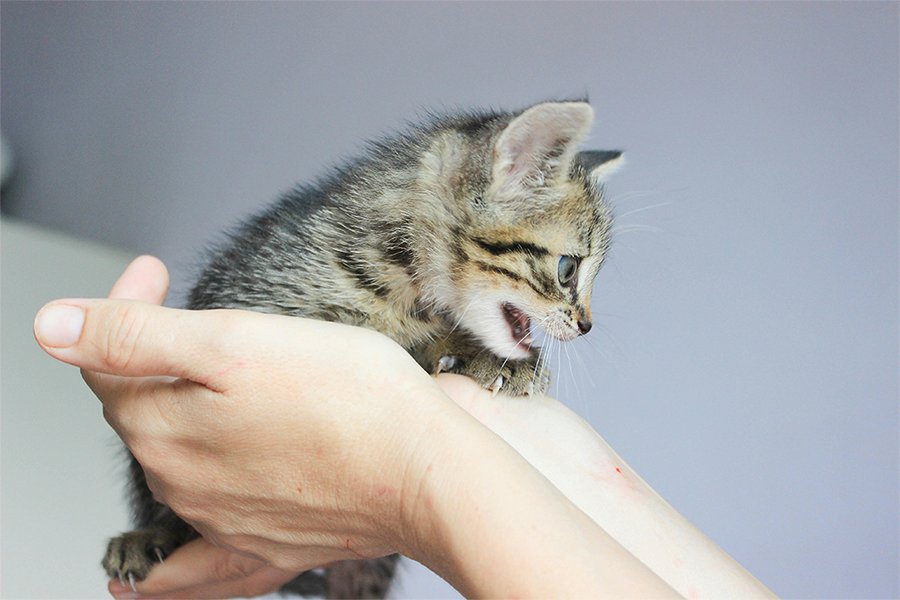How to Train a Kitten Litter Box – Easy Guide for Beginners
Discover how to train a kitten to use a litter box with simple steps. Find supplies,
training tips, and expert advice to keep your kitty clean and happy indoors.
Why Litter Training Your Kitten Is Important?
Bringing a new kitten into your home is a happy and thrilling experience. This tiny bundle of fur brings an abundance of love, happiness, and companionship into your life. But along with the cuddles and playtime comes responsibility. One of the first big lessons for your kitten is litter box training. Many new owners ask, How to train a kitten to use a litter box? The answer is simple: with patience, the right setup, and consistency, any kitten can learn.
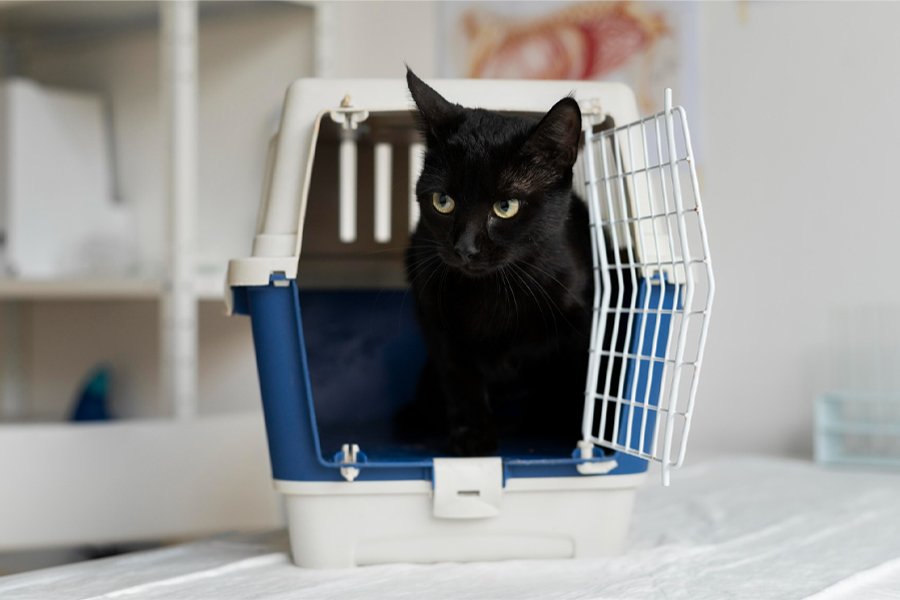
Why Litter Training Is So Important?
Cats are naturally clean animals, but that does not mean they automatically know where to go. If your kitten is not guided, they may choose carpets, beds, or corners of your home. This can quickly turn your happy moments into stressful ones. Proper litter training is not just about convenience; it is about health, hygiene, and creating a safe environment for your pet.
Keeps your home clean: No more unexpected messes on carpets or sofas.
Protects health: A clean litter box reduces bacteria and prevents urinary or digestive infections.
Reduces stress: Both for you and your kitten. Knowing there is a safe, clean place helps your kitten relax.
Good habits for life: Once your kitten is trained, the habit usually stays for years. Now, the question may be how to train a kitten to use a litter box at home. Now, the question may be how to train a kitten to use a litter box at home.
When to Start Litter Training?
The ideal time to start is right when your kitten comes home. Most kittens can begin learning at 3 to 4 weeks old. By 8 weeks, they are typically prepared to use a litter box regularly. The earlier you begin, the easier it will become.
How Long Does It Take?
Every kitten is different. Some learn in just a few days, while others may take a couple of weeks. Patience is key. Do not scold them for accidents. Instead, gently place them in the litter box at the right times (after meals, naps, or play).
The Role of the Right Setup: Many owners fail because they do not prepare the right supplies. A box that is too big, too high, or filled with the wrong litter will make training harder. Remember, kittens are small, curious, and sometimes nervous. Giving them an easy, comfortable setup increases your success rate.
The Emotional Bond: Litter training is also a chance to strengthen your bond. When you guide your kitten with gentle words, soft touches, and encouragement, they begin to trust you. Cats that feel safe with their humans learn faster and adapt better.
Supplies You Need Before Litter Box Training.
Before you begin teaching your kitten how to use a litter box, it is important to gather the right supplies. A proper setup makes the training process faster, easier, and less stressful for both you and your pet. Without the right tools, even a smart kitten may hesitate to use the box. Below are the essentials every cat owner should prepare.
1. Kitten-Friendly Litter Box: Young kittens are small, so they need a low-sided litter box that is easy to enter and exit. A box that is too tall or too big can frustrate them. Experts recommend keeping at least two boxes in different corners of your home to avoid accidents.
2. Safe Cat Litter: For kittens younger than 8–10 weeks, non-clumping litter is the safest option because they sometimes lick their paws. Unscented, dust-free formulas are gentle on small paws and prevent breathing problems. Once they grow older, you can slowly introduce clumping litter.
3. Litter Mat: A litter mat helps keep your floors clean by trapping particles that stick to your kitten’s paws. It reduces tracking and makes cleaning easier for you.
4. Scooper and Odor Control: Daily scooping is important because cats do not like dirty boxes. A sturdy scooper makes this task quick. To control odor, many cat parents also use a disposal system like the Litter Genie, which locks away waste and smell.
5. Cleaning Supplies: Kittens may have accidents outside the box during the first few weeks. Using pet-safe cleaners is important because strong chemicals can be harmful. Enzyme-based sprays remove odor completely, so your kitten does not return to the same spot.
6. Training Treats: Positive reinforcement helps your kitten learn faster. Keep small, healthy treats nearby and reward them every time they use the box correctly.
Think of these supplies as a small investment in your kitten’s comfort and your home’s cleanliness. With the right setup, litter training becomes much easier, and your kitten develops healthy habits for life
Step-by-Step How to Train a Kitten Litter Box
Training a kitten to use the litter box may sound difficult, but if you follow a step-by-step routine, most kittens learn quickly. Cats are naturally clean animals, so with patience and the right approach, you can guide them successfully.
Step 1: Introduce the Litter Box Early: Once you get your kitten home, introduce them to the litter box. Place them gently inside and let them sniff around. Do not force them to stay, but allow them to explore at their own pace.
Step 2: Choose the Right Location: Location plays a big role in training. Keep the litter box in a quiet area where your kitten feels safe. Avoid noisy spots like near washing machines or crowded hallways. Do not put the box beside their food or water bowls.
Step 3: Establish a Routine: Kittens usually need to go after waking up, after meals, or after playtime. Place your kitten in the litter box during these times so they start linking the behavior. Over time, they will go on their own.
Step 4: Use Positive Reinforcement: Each time your kitten uses the litter box correctly, give them gentle praise or a small treat. Positive reinforcement builds trust and encourages repetition. Never punish your kitten for accidents—it only creates fear.
Step 5: Handle Accidents Calmly: It is normal for kittens to make mistakes in the beginning. If an accident happens, clean the spot with a pet-safe odor remover. This prevents them from returning to the same place. Stay patient, because consistency is the real key.
Step 6: Keep the Box Clean: Cats prefer clean litter boxes. Scoop waste at least once daily and change the litter completely every week. Wash the box with mild, unscented soap and dry it well before refilling. A clean box encourages regular use.
Step 7: Gradual Freedom: When your kitten is new, limit their roaming space to one or two rooms. As they learn to use the litter box reliably, you can expand their freedom. This prevents accidents in hard-to-reach corners.
Recommended Supplies for Litter Training (Available on Amazon)
Choosing the right supplies makes litter training smoother for both you and your kitten. Below are some of the most recommended options, which are easily available on Amazon.
Common Challenges and Quick Fixes
Kitten avoids the box: Consider switching the type of litter or moving the box to a more peaceful spot.
Kitten digs but does not use: This often means the box is not clean enough—scoop more frequently.
Multiple kittens: Provide more than one box to avoid competition.
Final Thoughts on Training
Training your kitten for the litter box is more about patience than strict rules. By following a routine, rewarding good behavior, and keeping the setup clean, you can build habits that will last a lifetime. Remember, every kitten learns at a different pace—your gentle guidance makes the biggest difference.
Creating a Safe and Loving Home Environment
Learning how to train a kitten to use a litter box is only the first step toward raising a happy, healthy cat. Your kitten also needs a safe and loving environment to grow with confidence. A secure home helps your kitty respond better to consistent litter training and build a strong bond with you. For more expert advice on creating a stress-free space, check trusted resources like this guide to kitten care. Providing both proper training and a calm, caring home will set your kitten up for a lifetime of good habits.
1. Provide a Safe Space
Kittens can feel overwhelmed in a new home. Start by giving them a quiet room where they can rest, eat, and use the litter box without disturbance. Slowly allow them to explore other rooms once they are comfortable.
2. Keep Hazards Away
Curious kittens love to chew and climb, which means they can easily get into dangerous situations. Make sure electrical cords are covered, small objects are removed, and harmful plants or cleaning products are kept out of reach.
3. Give Them Toys and Enrichment
Indoor kittens need mental stimulation to stay active and happy. Without toys, scratching posts, or climbing areas, they may get bored and develop bad habits. Playtime also strengthens your bond with them.
4. Balanced Diet and Fresh Water
Food and water are the foundation of good health. Always keep a clean water bowl or pet fountain available, as hydration supports digestion and kidney health. Choose kitten-formulated food rich in protein and nutrients to support fast growth.
5. Gentle Socialization
Expose your kitten to different sounds, people, and mild experiences in a positive way. This helps prevent fearfulness later in life. A well-socialized kitten is more confident, playful, and easier to handle at the vet.
6. Regular Health Care
Routine vet visits, vaccinations, and deworming are important in the first year. A healthy kitten learns better and has fewer problems with litter training or behavior. Schedule checkups as advised by your veterinarian.
7. Love and Patience
Above all, your kitten needs gentle love. Punishment does not work and only damages trust. Instead, use calm words, soft touches, and rewards to guide behavior. Cats may be independent, but they thrive when they feel safe and cared for.
When you combine proper litter box training with a safe, enriched, and loving home, you set the foundation for a happy life with your cat. A kitten trained with patience today becomes an adult cat who is clean, well-behaved, and deeply bonded with you.

